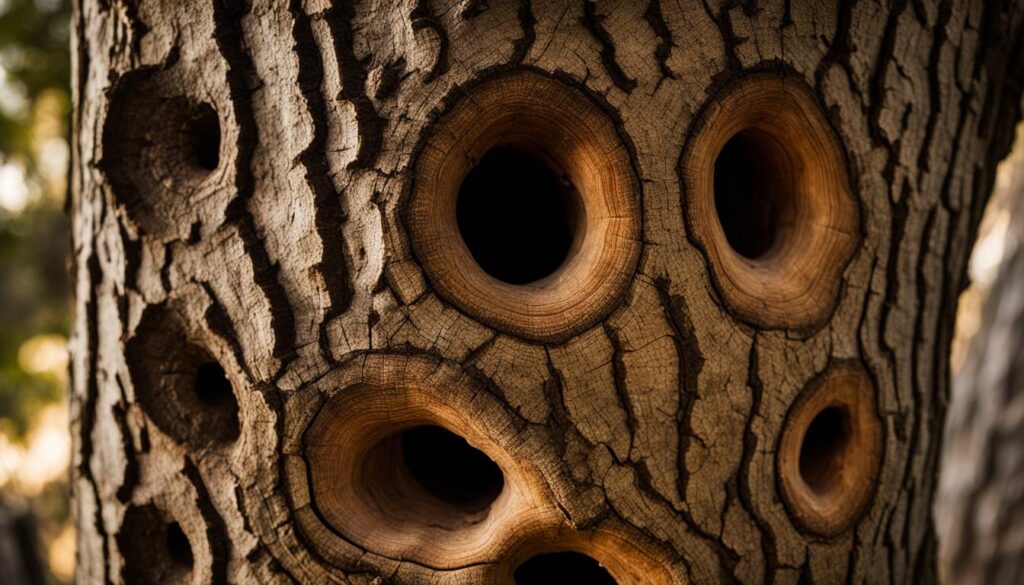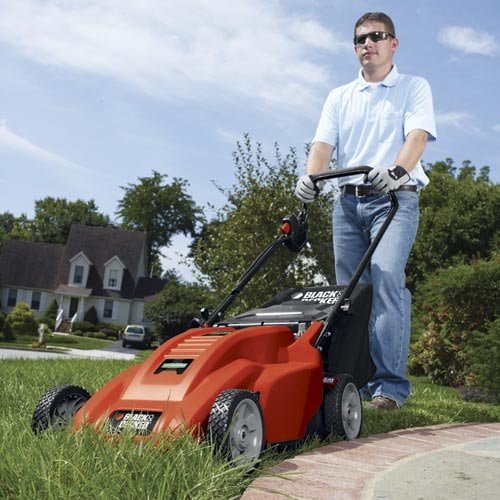Welcome to our informative guide on understanding holes in tree trunks and their causes and effects. If you have noticed holes in the trunks of your trees, it’s essential to understand the reasons behind their formation and the potential impacts they can have on tree health. By gaining this knowledge, you can take appropriate measures to maintain a healthy garden environment.
Holes in tree trunks can occur due to various factors, including human interference, weather events, and animal activity. Understanding the causes is crucial in determining the severity and potential consequences. Some of the common causes of tree holes include holes made during tree-testing, sap tapping, woodpecker pecking, other animal species nesting, beetles burrowing, storm damage, and outdoor projects.
The size and severity of the holes can impact the overall health and stability of the tree. While smaller holes may not pose significant problems, larger holes can weaken the tree’s structure and make it more vulnerable to diseases and structural issues. Therefore, proper management and understanding of tree holes are vital for maintaining healthy trees in your garden.
In the following sections, we will delve deeper into the causes and symptoms of holes in trees, the associated risks, and effective management strategies. By the end of this guide, you will have a comprehensive understanding of how to prevent and address tree holes, ensuring the long-term health and beauty of your trees.
Causes and Symptoms of Holes in Trees
Identifying the causes and symptoms of holes in trees is crucial in determining the appropriate measures for treatment and prevention. Trees can develop holes due to various factors, including:
- Tree-testing: Increment-boring holes are commonly found when trees are tested for various reasons.
- Sap tapping: Trees that are tapped to collect sap can develop distinct holes for the collection process.
- Woodpeckers: Woodpeckers can leave pecked holes on trees as they search for food or establish territories.
- Other animal species: Some animals, such as squirrels or birds, may create holes in trees for nesting or shelter.
- Beetles: Certain beetles can bore tiny holes into tree trunks as they feed or lay eggs.
- Storms: Severe weather conditions like storms can cause large, irregular holes in trees due to fallen branches or debris.
- Outdoor projects: Trees can suffer damage from outdoor projects, resulting in holes from construction equipment or other human activities.
Each cause of tree holes leaves behind distinct symptoms. By closely monitoring trees, you can identify these symptoms and take appropriate action to protect their health and stability.
Risks and Management of Tree Holes
While tree holes can add charm to your garden, they also come with potential risks that can impact the health and stability of your trees. Holes in trees can create entry points for fungi and bacteria, weaken the tree’s structure, and make it more susceptible to diseases and other issues. Therefore, understanding and managing tree holes properly is crucial for maintaining a healthy garden environment.
To effectively manage tree holes, there are several measures you can take:
- Hire professionals for tree-testing: If you suspect that tree-testing has caused holes in your trees, it is best to enlist the help of professionals who have the skills and knowledge to assess the situation and provide appropriate solutions.
- Ensure proper techniques for sap tapping: If you tap trees for sap collection, make sure to use proper techniques that minimize the impact on the tree’s health and structure. This can help prevent unnecessary damage and the formation of larger holes.
- Employ deterrents to prevent woodpecker damage: Woodpeckers can cause significant damage to trees by creating holes for nesting or food sources. Implementing deterrents such as visual or auditory scare devices can help discourage woodpeckers from targeting your trees.
- Use tactile repellents to discourage other animals from nesting in trees: Some animals may choose tree holes as nesting sites, which can lead to further damage. Applying tactile repellents or physical barriers can discourage these animals from making nests in your trees.
- Take precautions during outdoor projects: When undertaking outdoor projects near trees, such as construction or landscaping, exercise caution to avoid unnecessary damage to the trees. Proper planning and implementation can help prevent additional holes from forming.
Regular monitoring and maintenance are also essential for preventing the formation of new tree holes and ensuring the long-term health of your trees. By proactively managing tree holes, you can mitigate the risks they pose and maintain a beautiful and thriving garden environment.
Conclusion
Understanding the causes and effects of holes in tree trunks is crucial for maintaining a healthy garden. By identifying the specific causes of tree holes, recognizing the associated symptoms, and implementing appropriate management measures, you can prevent further damage to your trees and ensure their long-term health.
To prevent tree holes, it is important to consult with professionals and prioritize regular monitoring and maintenance. Professional expertise can help you assess the condition of your trees and address any potential issues before they escalate. Regular monitoring allows you to identify early signs of damage or disease, enabling you to take timely action.
Effective tree hole management involves taking proactive steps, such as tree-testing, using proper techniques for sap tapping, employing deterrents to prevent woodpecker damage, and using tactile repellents to discourage other animals from nesting in your trees. Additionally, being cautious during outdoor projects can help avoid unnecessary damage to your trees.
By implementing these preventative measures, you can maintain the health and stability of your trees, preventing the formation of new tree holes and preserving the beauty of your garden. Remember, tree hole prevention and proper management are essential for maintaining the overall appearance and health of your garden environment.
Can the Growth Rate of Maple Trees Lead to Holes in Their Trunks?
Yes, the maple tree growth rate can indeed lead to holes in their trunks. As the tree grows, its outer layers can expand at different rates, creating weaknesses that make the trunk more susceptible to damage. This can result in the formation of holes in the trunk over time.










